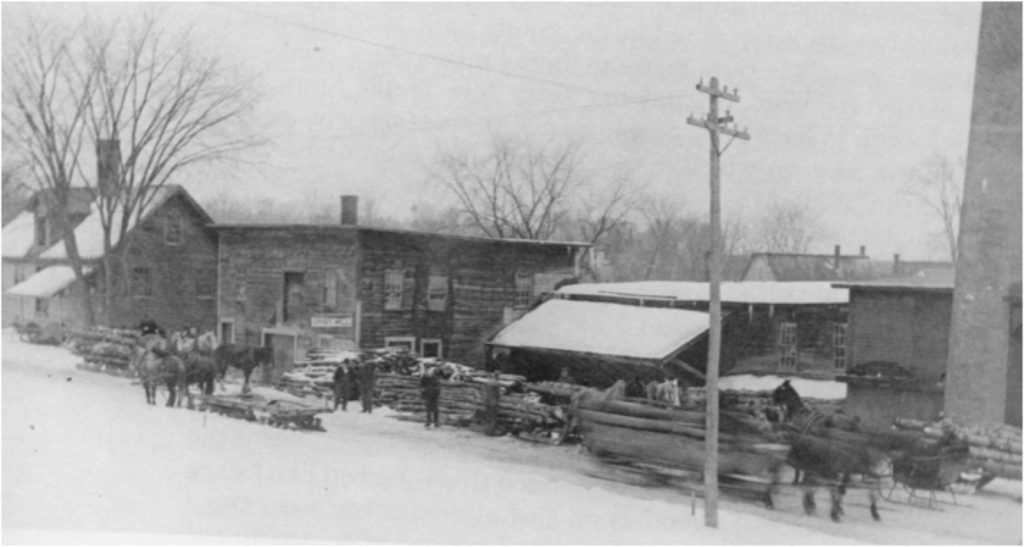Collect Day #21, GEORGE BLANCHARD
Almighty God, whose command is to treat one another with loving respect and fairness: witness our sorrow for our failing to acknowledge the success and skill of George Blanchard, and for us failing to protect the inheritance of his descendants. By your Spirit, transform our sorrow into faithful resolve to right the wrongs committed in our names, and to gain wisdom by learning from those we have previously ignored; through Jesus Christ our Lord. Amen.

DAY #21, March 9, 2018
Milford
GEORGE BLANCHARD
(1740–1824)
JerriAnne Boggis
George Blanchard, “a colored man,” so described in Ramsdell’s History of Milford, was a veterinary surgeon and Revolutionary War vet who moved to Milford from Wilton in 1804. He was born into slavery in Andover, Mass., sometime around 1740 and gained his freedom by the time he first appears in Milford’s neighboring town in 1774.
George with his wife, known only as Hannah, were “warned out” — given official notice by the town fathers that their presence was not wanted in Wilton. Despite this official discouragement, George and Hannah decided to stay. Soon after that decision, British regulars fired on the Minutemen at Lexington & Concord and George joined the New Hampshire Militia.
Returning from war, Blanchard soon became a tax-paying citizen. In 1776 he purchased a 40-acre farm and later added an adjacent 30-acre parcel. From the family’s modest beginnings, he became an important animal husbandry resource in the community. George, who gained enough education to read and to write, soon became known as an “animal healer,” becoming one of the pioneer veterinarians in the region. “Doctor” Blanchard traveled through southern New Hampshire and into central Massachusetts administering treatment to sick animals.
The Blanchards stayed in Wilton until they purchased a 66-acre plot on the Mason Road in Milford where he became the town’s veterinarian. Curiously, Wright’s history of Milford, published 78 years after Ramsdell’s, states: “There were no veterinarians recorded in Milford before 1899.” In 1805, Blanchard bought the blacksmith shop on Union Square. Wright writes, “This building seems to have come under the ownership of George Blanchard at an early date.” Even with the existence of a deed showing Blanchard’s ownership of this property, Wright is reluctant to grant credibility to Blanchard as a property owner.
George Blanchard had 10 children, all born in Milford. His first wife, Hannah, died in 1779. His widow Elizabeth died in 1832. George had died in 1824 at the age of 84. According to a list of soldiers and sailors published by the Massachusetts Society of the Sons of the American Revolution, Blanchard is buried in Milford in the “Old Burying Ground.” His son, Timothy Blanchard, succeeded him as a veterinary surgeon in the town.
On the 1854 map of Milford, Blanchard’s farm and the school he donated to the town (District Schoolhouse #4) is identified as the P.F. Shedd Farm and school.
In Reginald Pitts’ research on the Blanchards, Pitts writes, “By 1830, George’s son Timothy was comfortably in the middle ranks of Milford citizens, a family man who owned multiple parcels of land and was involved in a number of business concerns.” In less than a decade, however, the family’s fortunes would all come to an end. Two days after his 48th birthday, Oct. 3, 1839, Timothy died from an unknown cause and unlike his father did not leave a will. Worse, after his death, his estate went into probate. The administrator started selling off Blanchard’s landholdings, pocketing the proceeds. Timothy’s family became impoverished, dispersed, and George Blanchard’s legacy was erased from Milford’s history.
